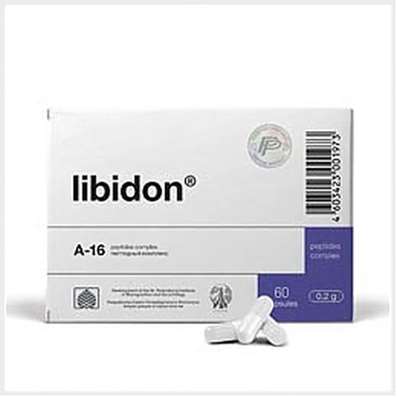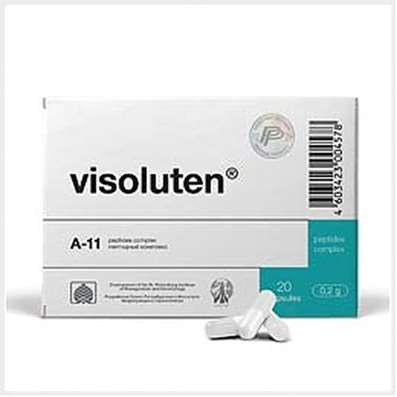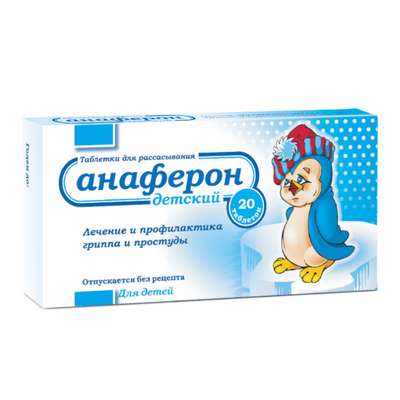Instruction for use: Tenoxicam (Tenoxicamum)
I want this, give me price
Pharmacological group
NSAIDs – Oxycams
Nosological classification (ICD-10)
M06.9 Other specified rheumatoid arthritis
Rheumatoid arthritis, Pain syndrome in rheumatic diseases, Pain in rheumatoid arthritis, Inflammation in rheumatoid arthritis, Degenerative forms of rheumatoid arthritis, Children's rheumatoid arthritis, Exacerbation of rheumatoid arthritis, Acute articular rheumatism, Rheumatic arthritis, Rheumatic polyarthritis, Rheumatoid arthritis, Rheumatic polyarthritis, Rheumatoid arthritis, Rheumatoid arthritis, Rheumatoid arthritis of active course, Rheumatoid periarthritis, Rheumatoid polyarthritis, Acute Rheumatic Arthritis, Acute rheumatism
M10.0 Idiopathic Gout
Primary gout
M19.9 Arthrosis, unspecified
Change in brush with osteoarthritis, Osteoarthritis, Osteoarthrosis, Arthrosis of large joints, Pain syndrome in osteoarthritis, Pain syndrome in acute inflammatory diseases of the musculoskeletal system, Pain syndrome in chronic inflammatory diseases of the musculoskeletal system, Deforming arthrosis, Deforming osteoarthritis, Deforming osteoarthritis of joints, Osteoarthritis in the acute stage, Osteoarthritis of large joints, Acute pain syndrome with osteoarthritis, Post-traumatic osteoarthritis, Rheumatic osteoarthritis, Spondylarthrosis, Chronic osteoarthritis
M42.9 Osteochondrosis of spine, unspecified
Pain syndrome in acute inflammatory diseases of the musculoskeletal system, Pain syndrome in chronic inflammatory diseases of the musculoskeletal system, Diseases of the spinal column, Osteochondrosis of the spine with radicular syndrome
M45 Ankylosing spondylitis
Ankylosing spondylarthrosis, Marie-Strumpel disease, Ankylosing spondylitis, Pain syndrome in acute inflammatory diseases of the musculoskeletal system, Pain syndrome in chronic inflammatory diseases of the musculoskeletal system, Bechterew's disease, Ankylosing spondylitis, Diseases of the spinal column, Rheumatic spondylitis, Bechterew-Marie-Strumpel disease
M54.9 Dorsalgia, unspecified
Pain syndrome with radiculitis, Pain syndrome in the back,Pain with radiculitis, Degenerative changes in the spine, Degenerative and dystrophic disease of the spine and joints, Degenerative disease of the spine, Osteoarthrosis of the spine, Painful lesions of the spine
M60.9 Myositis, unspecified
Neuromyositis, Extubulbar myositis
M71.9 Bursopathy, unspecified
Bursites, Alberta disease, Acute bursitis
M77.9 Other unspecified
Capsule, Periarthritis, Tendonitis, Tendopathy, Periarthropathy
M79.0 Other unspecified rheumatism
Degenerative rheumatic disease, Degenerative and rheumatic diseases of the tendons, Degenerative rheumatic diseases, Localized forms of rheumatism of soft tissues, Rheumatism, Rheumatism with a pronounced allergic component, Rheumatism of the articular and extraarticular, Rheumatic attack, Rheumatic complaints, Rheumatic diseases, Rheumatic disease of the spine, Relapses of rheumatism, Articular and extra-articular rheumatism, Articular and muscular rheumatism, Articular rheumatism, Articular syndrome with rheumatism, Chronic rheumatic pain, Chronic articular rheumatism, Rheumatoid diseases, Rheumatic diseases of the intervertebral disc
M79.1 Myalgia
Myofascial pain syndromes ,Pain syndrome in musculo-articular diseases, Pain syndrome in chronic inflammatory diseases of the musculoskeletal system, Pain in the muscles, Tenderness of muscles, Muscular soreness in severe physical exertion, Painful conditions of the musculoskeletal system, Pain in the musculoskeletal system, Pain in the muscles, Pain at rest, Muscle aches, Muscle pain, Musculoskeletal pain, Myalgia, Muscle pain, Muscle pain at rest, Muscle pain, Muscular pain of non-rheumatic origin, Muscle pain of rheumatic origin, Acute muscle pain, Rheumatic pain, Rheumatic pains, Myofascial syndrome, Fibromyalgia
M79.2 Neurology and neuritis, unspecified
Pain syndrome with neuralgia, Brachialgia, Occipital and intercostal neuralgia, Neuralgia, Neuralgic pain, Neuralgia, Neuralgia of intercostal nerves,Neuralgia of the posterior tibial nerve, Neuritis, Neuritis traumatic, Neuritis, Neurological Pain Syndromes, Neurological contractures with spasms, Acute neuritis, Peripheral neuritis,Post-traumatic neuralgia,Severe pain of a neurogenic nature, Chronic neuritis, Essential neuralgia
R52.9 Unspecified Pain
Pain after cholecystectomy, Pain shooting, Non-malignant pain, Obstetric and gynecological pain, Pain syndrome, Pain in the postoperative period, Pain in the postoperative period after orthopedic surgery, Pain of inflammatory genesis, Pain than cancer genesis, Pain syndrome after diagnostic procedures, Pain after surgery Diagnostic, Pain after surgery, Pain after orthopedic surgery, Pain after injuries, Pain after the removal of hemorrhoids, Pain at the non-rheumatic inflammation of nature, Pain in inflammatory lesions of the peripheral nervous system, Pain in diabetic neuropathy, Pain in acute inflammatory diseases of the musculoskeletal system, Pain when the tendon pathology, Pain smooth muscle spasm, Pain spasm of smooth muscles (renal and biliary colic, intestinal spasms, dysmenorrhea), Pain spasm of smooth muscles of internal organs, Pain spasm of smooth muscles of internal organs (kidney and biliary colic, intestinal spasms, dysmenorrhea), Pain in trauma syndrome, Pain with injuries and after surgical interventions, Pain in chronic inflammatory diseases of the musculoskeletal system, Pain with duodenal ulcer, Pain syndrome in gastric ulcer, Pain syndrome in gastric ulcer and duodenal ulcer, pain, Pain during menstruation, pain syndromes, painful condition, Painful foot fatigue, Sore gums when wearing dentures, Soreness of the cranial nerves exit points, Painful menstrual irregularities, Painful dressings, Painful muscle spasm, Painful teeth growth, Melosalgia, Pain in the area of the surgical wound, Pain in the postoperative period, Pain in the body, Pain after diagnostic procedures, Pain after orthopedic surgery, Pain after surgery, The pains of the flu, Pain in diabetic polyneuropathy, Pain for burns, Pain during sexual intercourse, Pain during diagnostic procedures, Pain during therapeutic procedures, for colds Pain, Pain in sinusitis, Pain in trauma, Pain traumatic, The pain in the postoperative period, Pain after diagnostic procedures, The pain after sclerotherapy, Pain after surgery, postoperative Pain, Pain postoperative and posttraumatic, posttraumatic pain, Pain when swallowing, Pain in infectious and inflammatory diseases of the upper respiratory tract, The pain of burns, The pain in traumatic muscle injury, Pain in trauma, The pain of tooth extraction, The pain of traumatic origin, Pain caused by spasm of smooth muscles, Expressed pain syndrome, Expressed pain syndrome, traumatic origin, Postoperative pain, Post-traumatic pain, Post-traumatic pain syndrome, Torpid pain, Traumatic pain, Traumatic pain, Mild pain, Moderately severe pain, Moderate pain, Polyarthralgia with polymyositis
T14.9 Injury unspecified
Pain syndrome after trauma, Pain syndrome with injuries, Pain syndrome with trauma and after surgery, Pain in case of injury, Pain of a traumatic nature, Joint pain with injuries, Postoperative and post-traumatic pain, Pain in case of injury, Pain of a traumatic origin, Severe pain syndrome of traumatic origin, Deep tissue damage, Deep scratches on the trunk, Closed injury, Minor Household Injuries, Minor skin damage, Violations of the integrity of soft tissues, Uncomplicated trauma, Extensive traumatic injury, Acute pain syndrome of traumatic origin, Edema with trauma, Postponed sports injuries, Post-traumatic pain, Soft tissue injuries, Joint wounds, Sports injuries, Injury, Traumatic pain, Traumatic pains, Traumatic infiltrate,Injuries to sports
Code CAS 59804-37-4
Pharmacology
Pharmacological action - anti-inflammatory, antipyretic, analgesic.
Non-selectively blocks both isoforms of cyclooxygenase (COX (cyclooxygenase) -1 and COX-2), disrupts the metabolism of arachidonic acid. The anti-inflammatory effect is caused by a decrease in the permeability of capillaries (limits exudation), stabilization of lysosomal membranes (prevents the release of lysosome enzymes that cause tissue damage), inhibition of the production of macroerges, incl. ATP (adenosine triphosphate), inhibition of synthesis or inactivation of inflammatory mediators (PG (prostaglandins), histamine, bradykinin, lymphokines, complement factors). Reduces the amount of free radicals in the focus of inflammation, inhibits chemotaxis and phagocytosis. It inhibits proliferative phase of inflammation, reduces post-inflammatory sclerosis of tissues.
Reduces pain sensitivity in the focus of inflammation and acts on thalamic pain centers. Inhibits the synthesis of PGE1, eliminates its activating effect on the formation of cAMP, which leads to a decrease in heat generation and an increase in heat transfer. Oppressing the formation of Tx, inhibits platelet aggregation. Has a desensitizing effect (with prolonged use).
Quickly and completely absorbed from the digestive tract (gastrointestinal tract), eating slows the rate of absorption. Bioavailability of 100%. Cmax is achieved after 2 hours. In the blood, it binds to proteins by 99%. The volume of distribution is 0.15 l / kg. T1 / 2 - 60-75 h. In the liver it is hydroxylated, forming 5-hydroxytene oxicam. Easily passes through the histohematological barriers. The main part is excreted in the form of inactive metabolites with urine, the rest - with bile.
In rheumatic diseases, it alleviates pain in joints at rest and during movement, reduces morning stiffness and swelling of the joints, improves functions and increases the volume of joint movements. The anti-inflammatory effect develops by the end of the first week of treatment.
Application of Tenoxicam
Inflammatory and degenerative diseases of the musculoskeletal system accompanied by pain syndrome: articular syndrome with gout, rheumatoid arthritis, osteoarthritis, ankylosing spondylitis, osteochondrosis; tendonitis, bursitis, myositis; pain in the spine, neuralgia, myalgia, trauma.
Contraindications
Hypersensitivity, erosive and ulcerative lesions of the gastrointestinal tract (including in the anamnesis), gastrointestinal hemorrhage (including in the anamnesis), gastritis of severe course, "aspirin" triad (combination of bronchial asthma, recurrent nasal polyposis and paranasal sinuses , as well as intolerance to acetylsalicylic acid and drugs of pyrazolone series), impaired blood clotting, marked violations of the liver and / or kidney function.
Restrictions for use
Diabetes mellitus, arterial hypertension, chronic heart failure, pregnancy, breast-feeding, children's age.
Side effects
On the part of the intestine: dyspepsia (nausea, vomiting, heartburn, diarrhea, flatulence), NSAIDs-gastropathy, pain and abdominal discomfort, stomatitis, anorexia; with prolonged use in high doses - erosive and ulcerative lesions of the gastrointestinal tract.
From the nervous system and sensory organs: headache, dizziness, insomnia, depression, increased excitability, edema and eye irritation, visual impairment, hearing loss, tinnitus.
From the cardiovascular system and blood (hematopoiesis, hemostasis): tachycardia, edematous syndrome, increased blood pressure, bleeding (gastrointestinal, gingival, uterine, hemorrhoidal), leukopenia, agranulocytosis.
Allergic reactions: skin rash, hives, itching, erythema, Stevens-Johnson syndrome and Lyell.
Other: impaired renal function, increased plasma concentrations of creatinine, urea nitrogen, bilirubin and hepatic transaminase activity, prolonged bleeding time.
Interaction
Enhances the effects (including toxic) of lithium drugs, indirect anticoagulants, oral hypoglycemic agents (sulfanylurea derivatives), side effects of mineral and glucocorticoids, estrogens. Antacids reduce the rate of absorption. Other NSAIDs increase the risk of side effects, especially from the gastrointestinal tract. Myelotoxic drugs increase the manifestation of hematotoxicity.
Routes of administration
Inside, in / m (intramuscularly), in / in (intravenously).
Precautions for Tenoxicam
Use with caution for the treatment of elderly people, against diuretics, nephrotoxic drugs, immediately after surgery. A few days before surgery, tenoxicam should be discontinued. In the course of long-term treatment, liver and kidney function control, a prothrombin index (against indirect anticoagulants), glucose in the blood (if the patient receives oral hypoglycemic agents) is necessary. Development against the background of treatment of erosive-ulcerative lesions or bleeding from the gastrointestinal tract requires immediate discontinuation of the drug and taking appropriate measures.
When used in conjunction with diuretics and in patients with arterial hypertension and heart failure, the possibility of sodium and water retention in the body should be considered. It should be borne in mind that the presence of a history of kidney disease predisposes to the development of interstitial nephritis, papillary necrosis and nephrotic syndrome.

 Cart
Cart





